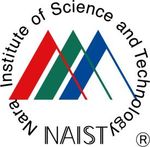ARTA: Collection and Classification of Ambiguous Requests and Thoughtful Actions
←
→
Page content transcription
If your browser does not render page correctly, please read the page content below
ARTA: Collection and Classification of
Ambiguous Requests and Thoughtful Actions
S h o h ei Tan ak a 1 , 2 , 3 , Ko i c h iro Yo s h ino 3 , 1 , 2 , Kat s u hito S u d o h 1 , 2 , S at o shi N ak am u ra 1 , 2
1 N ara I n s t it ute of S c i en ce an d Te c h n o logy ( N A I S T)
2 C e n t er f o r A d van ced I n t elligenc e Pro j e c t ( A I P) , RI KEN
3 Gu ard i an Ro b o t P ro j e c t ( GRP) , R - I H , RI KEN
S I GD I A L 2 0 2 1Existing Task-Oriented Dialogue Systems
User request is not I can’t understand
for a specific function. the user request…
I love the view here.
…
User
Dialogue Agent
Respond to user requests using pre-defined APIs.
Assume that the user requests are clear and explicit.
Unable to generate appropriate actions when the requests are ambiguous.
Copyright © 2021 Shohei Tanaka All Rights Reserved 2/16Research Objective: Thoughtful Dialogue Agent
Agent can take an action
I love the view here.
corresponding to
a potential user’s request.
Shall I launch the
User camera app?
Dialogue Agent
Thoughtful human concierge can take a “thoughtful action” as shown in
the figure.
Aim to build a thoughtful dialogue agent that enables to take thoughtful
actions to ambiguous requests.
Copyright © 2021 Shohei Tanaka All Rights Reserved 3/16Corpus Collection Method
Problems of general WoZ (Wizard of Oz) method:
Taking thoughtful actions is difficult even for humans.
System actions are limited by functions such as API.
Easier to ensure the quality of the corpus when system actions are defined.
Crowd workers type preceding requests that defined actions can be
considered thoughtful.
Typed
I consider the agent to be thoughtful I love the view here.
if the agent launches the camera app
after I say “I love the view here.”
Shall I launch the
Crowd Worker camera app?
Pre-defined Dialogue Agent
Copyright © 2021 Shohei Tanaka All Rights Reserved 4/16Situation settings
Domain is sightseeing in Kyoto.
Interaction between a user and a dialogue agent on a smartphone.
All dialogues consist of one request and one action.
System actions are defined in advance based on APIs.
Function Category # of category
spot search park, shrine, etc. 30
restaurant search sushi, shaved ice, etc. 30
app launch camera, map, etc. 10
Action form examples:
Spot search: “Shall I search for a park around here?”
Restaurant search: “Shall I search for a sushi around here?”
App launch: “Shall I launch the camera application?”
Copyright © 2021 Shohei Tanaka All Rights Reserved 5/16Collection Results
Function Ave. length # requests
spot search 13.44 (+-4.69) 11,670
restaurant search 14.08 (+-4.82) 11,670
app launch 13.08 (+-4.65) 3,890
all 13.66 (+-4.76) 27,230
Corpus statistics
User request (collected) System action (pre-defined)
I’m sweaty and uncomfortable. Shall I search for a hot spring around here?
I’m bored of Japanese food. Shall I search for meat dishes around here?
Nice view. Shall I launch the camera application?
Examples of user requests
Split the data for each category in the ratio of
train data : valid data : test data = 8:1:1 = 21,784:2,730:2,730.
Copyright © 2021 Shohei Tanaka All Rights Reserved 6/16Multi-Class Classification Problem
Because the collected user requests are ambiguous, some of the 69
unannotated actions can be thoughtful.
e.g. For a request “I’m bored of Japanese food,” suggesting
any type of restaurant other than Japanese can be thoughtful.
○ (Pre-defined) meat dishes
I’m bored of shrine
×
Japanese food.
…
69 actions
○ French
Labeling all combinations of user requests and system actions is costly and
impractical.
Completely annotated all combinations in the test data with
crowdsourcing.
Copyright © 2021 Shohei Tanaka All Rights Reserved 7/16Resultant Corpus
Data User request System action System action
(collected) (pre-defined) (additionally annotated)
train I’m sweaty and hot spring (Shall I search for - (no annotation)
uncomfortable. a hot spring around here?)
test I’m bored of meat dishes (Shall I search for Chinese, French, etc.
Japanese food. meat dishes around here?)
Examples of dialogue with additional annotation
No train data has additional annotation.
Only test data has additional annotation.
Additional actions could also be regarded as thoughtful.
Copyright © 2021 Shohei Tanaka All Rights Reserved 8/16Additional Annotation Statistics
Function # added categories Restaurant has the highest average
spot search 8.45 (+-7.34) because it associates with diverse
restaurant search 9.81 (+-7.77) categories.
app launch 5.06 (+-8.48) Std is 7.84; # added categories varies
all 8.55 (+-7.84) greatly for each user request.
# added action categories
Actions related to the same role are
annotated in functions of “spot search”
and “restaurant search.”
One of the actions near the right-most
column is identified as thoughtful for
many requests.
The action category is “browser,” which is
expressed in the form of “Shall I display
the information about XX?”
Heat map of combination
Copyright © 2021 Shohei Tanaka All Rights Reserved 9/16User Request Classifier
I’m bored of Classifier
BERT
Japanese food.
User Request … Distributed
Representation
0.02
rest stop
In test data, MLP
some categories Chinese
camera 0.01
could be targets.
French
…
0.2
But train data has
Target Category
…
only one target. meat dishes
Categories
Classify user requests to each target category.
BERT converts the requests to distributed representations.
MLP calculates the probability value for each category.
Category with the highest probability is the predicted category.
Copyright © 2021 Shohei Tanaka All Rights Reserved 10/16Training Model with Uncomplete Labeled Data
Categories In PN learning, only meat dishes
is treated as positive (labeled).
Other categories are unlabeled;
I’m bored of Some of them could be positive.
Japanese food. meat dishes We want to treat Chinese and French
User Request as positive with PU learning.
Positive Negative (PN) learning
Treats all combinations of unlabeled user requests and system actions as negative.
In our corpus, about 10% of these combinations should be treated as positive examples.
Positive Unlabeled (PU) learning
PU assumes that some of the data are labeled as positive and the rest are not.
Treats some unlabeled data as positive based on some kind of features.
Copyright © 2021 Shohei Tanaka All Rights Reserved 11/16PU Learning Based on Label Propagation
User requests for shrine User requests for Chinese
Nearest neighbor
Mean vector of user
Mean vector of user
requests for Chinese
requests for shrine User request
for meat dishes
Label propagation based on nearest neighbor (PU, nearest) [Cevikalp et al., 2020]
Propagates labels from the nearest neighbor on the distributed representation space.
e.g. shrine -> meat dishes
Proposed Label propagation based on mean vector (PU, mean)
Original label propagation is sensitive for outliers.
e.g. propagation from shrine to meat dishes is usually wrong.
Propagates labels according to their distance from mean vectors of each category.
Please refer to our paper for the detailed equations!
Copyright © 2021 Shohei Tanaka All Rights Reserved 12/16Experimental Settings Used pretrained Japanese BERT models [Shibata et al., 2019] Used BASE and LARGE [Delvin et al., 2019] BERT models. Pre-trained the models by PN learning before we applied PU learning. Evaluation metrics • Accuracy • R@5: Percentage of a target category ranking within the top 5 • Mean Reciprocal Rank (0 < MRR
Classification Results
* means that p < 0.01.
Model Accuracy (%) R@5 (%) MRR
BASE (PN) 88.33 (+-0.92) 97.99 (+-0.25) 0.9255 (+-0.0056)
BASE (PU, nearest) 88.29 (+-0.96) 97.81 (+-0.27) 0.9245 (+-0.0056)
BASE (PU, mean) *89.37 (+-0.78) 97.85 (+-0.26) *0.9305 (+-0.0050)
LARGE (PN) 89.16 (+-0.57) 98.08 (+-0.22) 0.9316 (+-0.0032)
LARGE (PU, nearest) 89.06 (+-0.66) 98.01 (+-0.24) 0.9295 (+-0.0036)
LARGE (PU, mean) *90.13 (+-0.51) 98.11 (+-0.27) *0.9354 (+-0.0035)
(PU, Mean) achieved significant improvement over the
baseline method (PN) on accuracy and MRR.
No improvement on R@5 because correct actions are
already included in the top five.
Copyright © 2021 Shohei Tanaka All Rights Reserved 14/16Label Propagation Performance
Model Precision (%) Recall (%) F1
BASE 78.06 (+-3.35) 8.53 (+-1.31) 0.1533 (+-0.0206)
LARGE 79.27 (+-4.43) 7.91 (+-1.10) 0.1435 (+-0.0172)
Evaluated the label propagation performance in the
proposed method (PU, mean) on the test data.
The higher the precision of the label propagation, the
higher the performance of the model.
Label propagation is able to add thoughtful action
categories as positive examples with high precision.
There is still room for improvement on their recalls.
Copyright © 2021 Shohei Tanaka All Rights Reserved 15/16Conclusion
Summary
Collected a corpus consists of ambiguous user requests and thoughtful
actions.
Constructed test data as a multi-class classification problem.
Developed user request classifiers using BERT.
Proposed PU learning method achieved high accuracy.
Future Work
Updating the classifier by improving the label propagation performance
Investigating the features of user requests that are difficult to classify
Copyright © 2021 Shohei Tanaka All Rights Reserved 16/16You can also read




















































